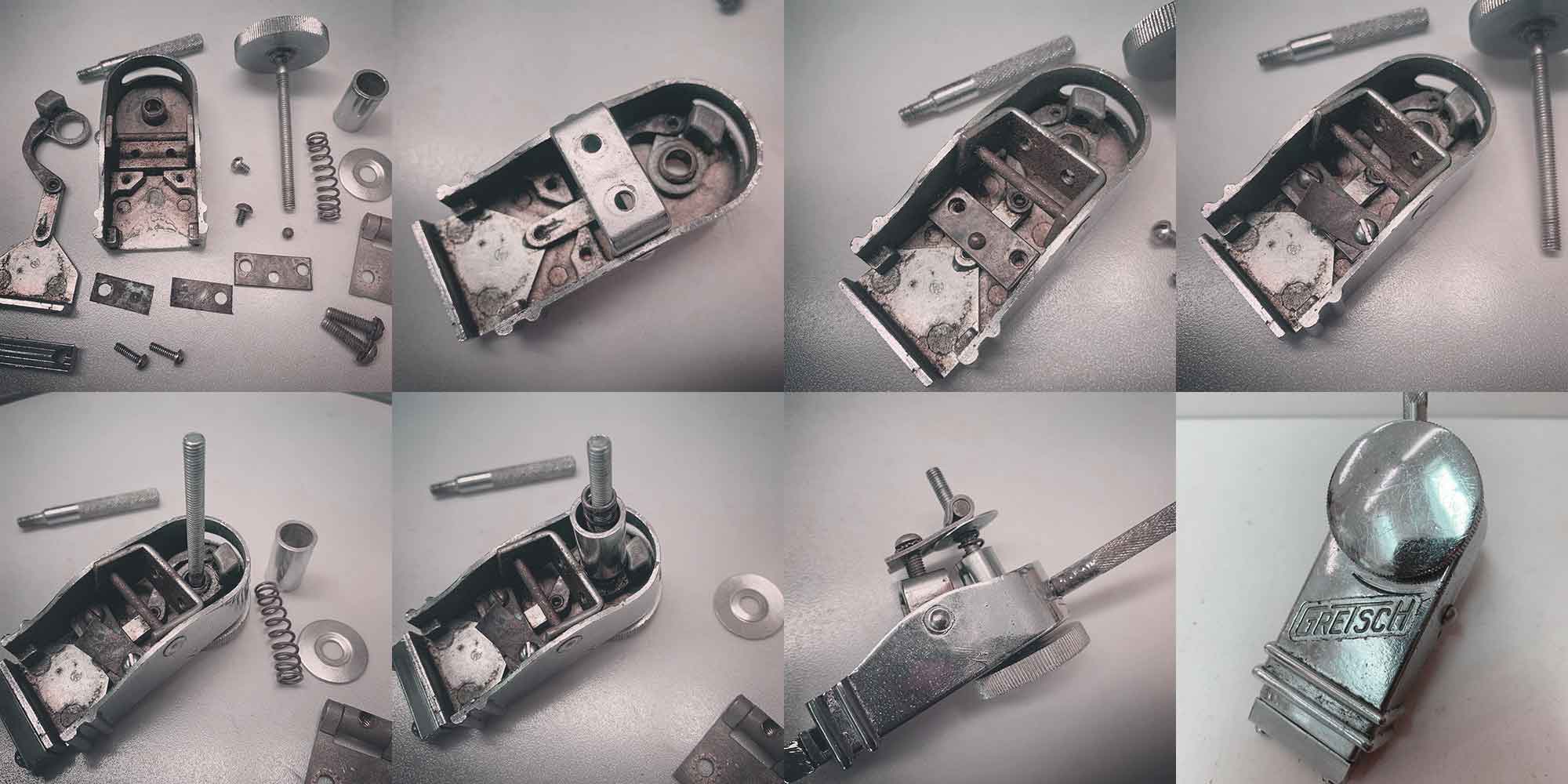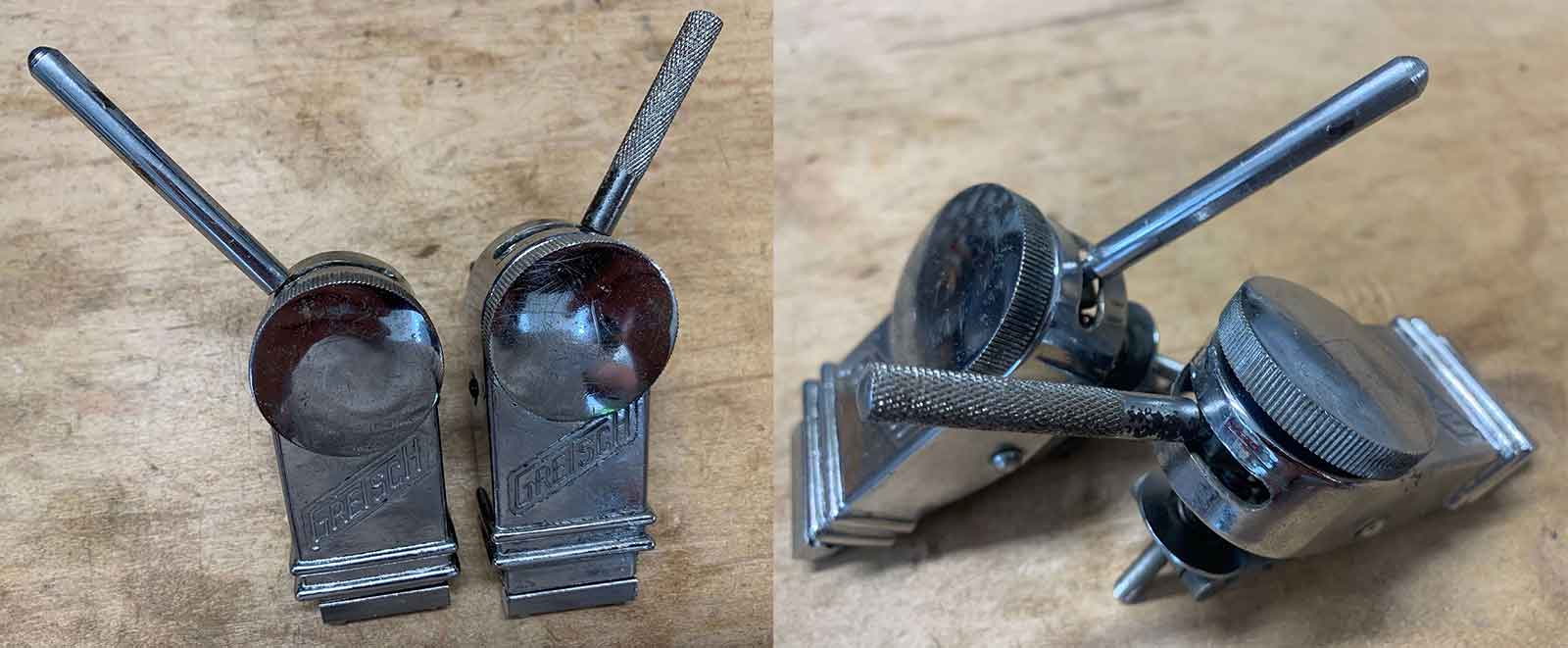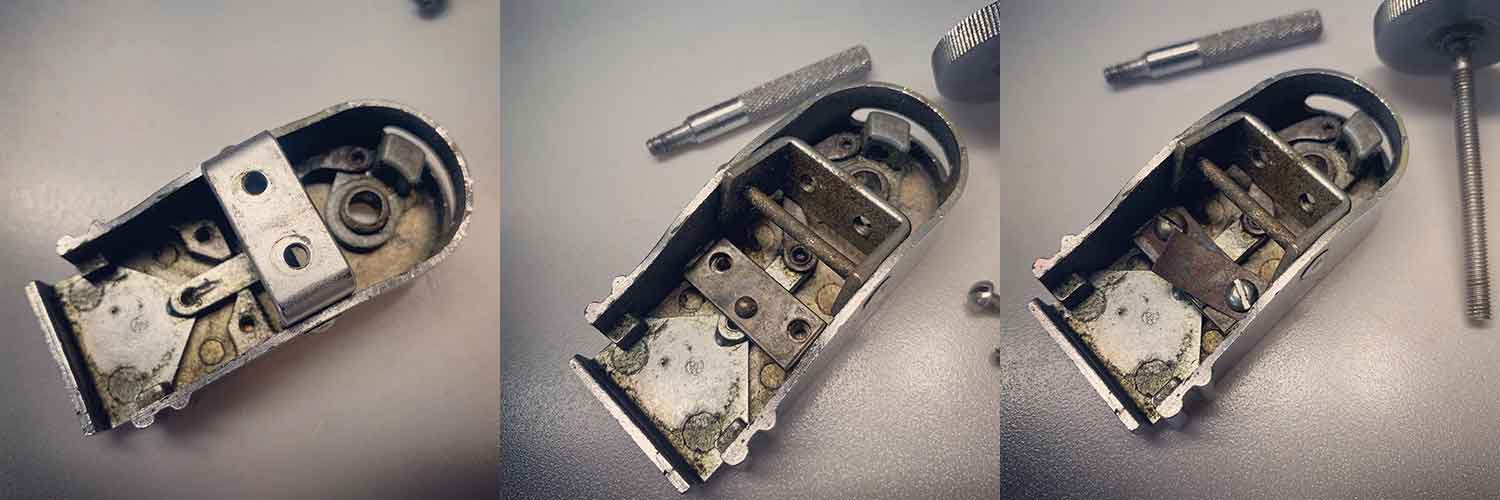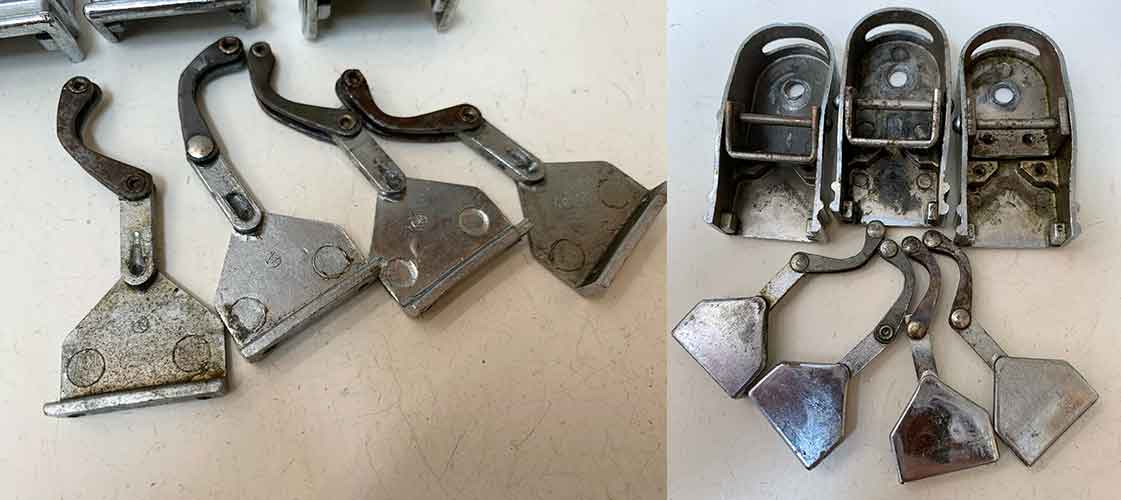
I’m always on the hunt for loose drum parts. Buying, selling and repairing large amounts of drum parts is what subsidizes my custom drum builds. I recently acquired a small pile of incomplete Microsensitive parts, which afforded the opportunity to fix a couple of incomplete ones I already had. I decided that these well-known strainer parts deserved a deep dive.

The Microsensitive throwoff strainer was introduced by Gretsch in 1950. It represented an almost completely novel reimagining of the engineering of snare drum throwoff motions, with the only real earlier analog being the Slingerland “clamshell” Super Strainer, introduced in 1940. Both models represented somewhat of a complicating of the wire tensioning mechanism, when compared with most prior exterior throwoffs (such as the Ludwig P338). The Microsensitive and clamshell models’ performance and reliability were likewise comparatively complicated.

The Microsensitive allows for some fine-tuning of the wire tension. Its adjustment knob pushes and pulls the strainer toward and away from the shell. It’s not a great range of motion however, so Microsensitives were always paired with an adjustable butt plate; the first of these was the single-point 5381 “Fast-Tension Snare Bracket,” while later the 4-point “Rear Snare Bracket” (also part number 5381) was used.

Most mysterious to my eye upon examining the back of the assembly are the two thin metal tabs. These apply tension to a small ball bearing held in place by a removable plate. This BB presses into a divot in the back of the slide when in the up/on position, and this serves as a detente mechanism to keep the slide from slipping down and disengaging the wires under the vibrations of playing. There were at least two slightly different patterns for the ball bearing housing plate, and they are not cross-compatible with different version of the full assembly.
The strike plate for the Microsensitive is the same platform/cup washer that Gretsch’s eyelet guides sit on for their single tension drums of the same era. The cord clamp screws are 4-40 threads (marching snare Microsensitives had 12-hole slides rather than cord clamps), the mounting screws 8-32 and the adjustment knob 10-32. Two short interior screws that hold the detente tabs in place are 6-32.
Earlier versions of the Microsensitive used a lever arm with 8-32 threads. Later arms had 10-32 threads, which was probably a benefit for keeping its motion contained snugly within the confines of the casting mouth. Beyond this there were several slightly different styles of arm, in different lengths. Loose original arms are very difficult to find.

There are several weak points in the Microsensitive design. The integrated collar rim inside the main casting and the detente divot in the upper slide both eventually wear out from normal use. The cast lever thread housing could crack if the arm was pushed too vigorously. And the barrel nut in the interior mounting plate assembly could easily become stripped if the adjustment knob was over-tightened.
Gretsch designed three versions of the Microsensitive, with the main castings longer or shorter for use with deeper or shallower drums. Two versions made it into production; the unproduced shortest version was intended for Max Roach 4×14 snares. These drums would have benefited from having the shorter strainer. The medium-sized Microsensitives could not lift the wires up far enough to get a clean tone. Gretsch decided to add a quarter-inch of depth to subsequent 4×14 snare models to resolve this issue. The longer casting versions of the Microsensitive were found on 6.5-inch or deeper Gretsch snares, and like the drums themselves are comparatively rare. Shorter strainers work just fine on deep drums however, and fit the same hole pattern.
Japanese companies would endlessly copy the engineering behind the Microsensitive throughout the 1960s, using cheap stamped frames and fewer internal components. Ironically, some of these cheap strainers worked and held up better than the US part they were clones of.

The original Microsensitive was discontinued in 1977. Since 2012, Gretsch produces a bulkier reproduction version which is superior in nearly every way. It’s a good idea to buy one of these repros for playing any original drum with an old Microsensitive, as the vintage parts will eventually fail even under ideal playing circumstances.

Very thorough dive into a widely debated and previously un-researched topic. I mean, I realize others have researched it, but rarely have I seen it explained so matter-of-factly. I appreciate the article and the time. Also, the attention to detail in your measurements is very very helpful. Thanks much!